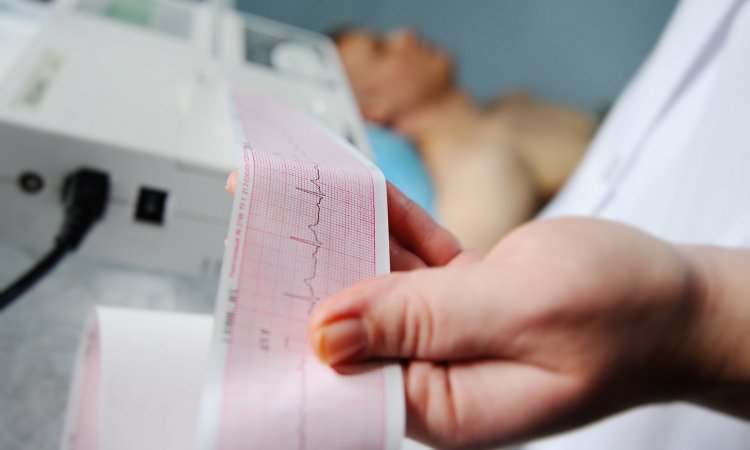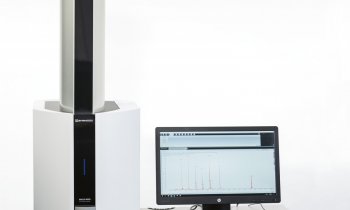Cardiac Biomarkers
Making the right decision needs brain and biomarkers working simultaneously
When in 1992 Dr Luigi Marzio Biasucci, head of the Sub-intensive Care Unit at the Catholic University of the Sacred Heart in Rome, Italy, published with his team the first paper on C-reactive protein (CRP) in unstable angina, few people believed in the diagnostic power of biochemical features to measure the effects or progress of disease, illness, or a condition. Today, biomarker tests are part of daily clinical routine.

Nonetheless, there remains much to learn about these aids. Speaking with Karoline Laarmann of European Hospital, Dr Biasucci, Chair of the New biomarkers in acute cardiac care session, summarised the current state of cardiac biomarkers.
In secondary prevention, cardiac biomarkers have already gained solid ground in diagnosis, evaluation and monitoring of cardiac patients. Probably the most notable biomarker is troponin I or T testing to diagnose myocardial damage. Because of its sensitivity and specificity, troponin has displaced older cardiac biomarkers, such as creatine kinase CK, CK-MB and myoglobin. Nevertheless there is always research to discover even better markers.
One interesting development is the ‘high-sensitivity’ troponin marker, which can detect heart injury in very low troponin levels within 2-3 hours, whereas the current Troponin marker tests take 6-12 hours. ‘There are clinicians who fear that this new troponin array can lead to more false positive diagnoses in emergency departments, because detection of troponin in about 10 times lower levels means an increase in sensitivity but decrease in specificity,’ Dr Biasucci pointed out. ‘In other words, the presence of high-sensitivity troponin in a patient with chest pain can not only mean a heart attack but also any other kind of cardiovascular disease that can lead to heart damage. My advice to cardiologists is to use brain and biomarkers at the same time: You cannot trust biomarkers alone, but must consider the clinical presentation of the patient: age, risk factors, kind of chest pain etc.’
In recent months, various European groups published major studies on troponin in ischemia that can be related to the good organizational structures in European hospitals with integrated emergency departments. Dr Biasucci and colleagues from the ESC Working Group on Acute Cardiac Care published new ‘recommendations for the use of cardiac troponin measurement in acute cardiac care’ in the August issue of the European Heart Journal.
Besides the well-established biomarkers in acute coronary syndrome, ischemia and heart failure, a totally new area is also developing -- it has been found that acute or chronic renal failure is highly associated to cardiac mortality in all these cases. So there is a high interest in biomarker arrays for renal function such as creatinine, and the new N-GAL and Cystatin C, to evaluate the course of cardiac disease or in acute situations, e.g. bypass surgery.
Another interesting novel biomarker is ST2, a member of the interleukin (IL)-1 receptor family, which has been developed by a US research group. ‘They found that the most expressed gene during heart failure was a gene called ST2, so now the research is also increasingly advancing under a molecular perspective by searching the genes that are over-expressed in some diseases, then searching for the protein that these genes produce and finally measuring the proteins for clinical purpose.’
Asked about biomarkers in primary prevention of cardiac event, Dr Biasucci responded: ‘In this area there are controversial debates, because we already have reliable parameters such as cholesterol or blood glucose. Additionally, there are risk assessment tools, such as the Framingham risk score or the European Systematic Coronary Risk Evaluation (SCORE), which can very efficiently rate individual patients’ risk. So the question is in how far the adding of further biomarkers can improve the prediction of cardiac diseases.’
Most famous in this field is the JUPITER trial by Paul Ridker of Brigham and Women’s Hospital in Boston, USA, (Justification for the Use of Statins in Primary Prevention: An Intervention Trial Evaluating Rosuvastatin trial), which found that patients with low density lipoprotein (LDL) cholesterol, known as ‘bad cholesterol’, but elevated CRP levels experience a decrease in the incidence of major cardiovascular events by 44 % when treated with rosuvastatin. However, due to the low risk and event rate in this population the risk reduction was large in relative terms, but relatively small in absolute terms. Furthermore, CRP is a sensitive, but not specific, marker of inflammation. ‘The value of CRP in subjects with border-line cholesterol levels to be treated with statin therapy is therefore not accepted worldwide. But, for sure, it can help us in patients with suspected acute cardiac syndrome to motivate them for lifestyle changes.
‘Especially in Europe,’ he continued, ‘there is an on-going discussion, from a political-economical perspective, that biomarkers can cause many costs. Today, we are treating all patients according to guidelines in the same way. The most important thing about biomarkers is their additional value in patients with unclear prognosis or in risk groups. Biomarkers can give physicians more security about therapy decisions and reduce the risk to collateral side effects from treatment. We therefore need to learn more about subgroups who profit the most from the use of biomarkers. Then we can reach a point where we can individualise therapy and therefore reduce costs instead of increase them.’
Session at ESC 2010 – New biomarkers in acute cardiac care.
29 August 2010. 16:30-18:00. Room: Berlin – Zone A
30.08.2010











